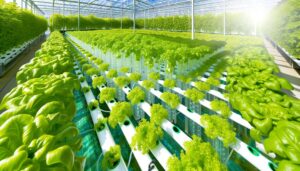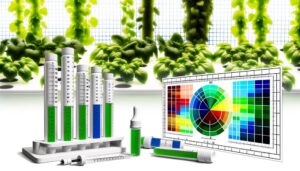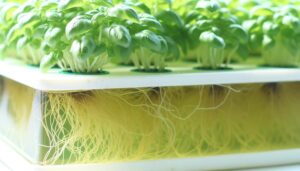Nutrient Availability Ph Chart Hydroponics
In hydroponics, a critical component for nutrient management is the pH level of the nutrient solution, typically between 5.5 and 6.5. This range guarantees ideal solubility and availability of essential nutrients.
Deviations from this pH range can lead to nutrient lockout, causing deficiencies and reduced plant health. For example, iron and manganese are more available in slightly acidic conditions, whereas calcium and magnesium prefer slightly alkaline environments.
Regular pH monitoring and precise adjustments are paramount to sustaining vigorous plant growth in hydroponic systems. Further exploration into pH management and its impact on nutrient availability can enhance cultivation success.
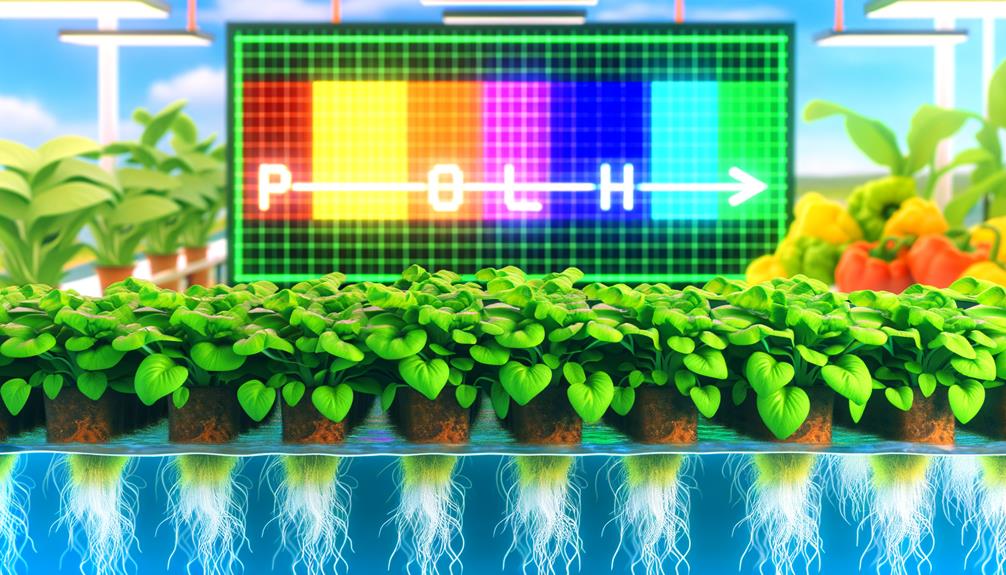
Key Takeaways
- Nutrient availability peaks between pH 5.5 and 6.5 for optimal hydroponic growth.
- Iron and manganese are more available in slightly acidic conditions (pH 5.5-6.0).
- Calcium and magnesium are more available in slightly alkaline conditions (pH 6.0-6.5).
- pH imbalances can cause nutrient lockout, leading to deficiencies and poor plant health.
Importance of Ph in Hydroponics
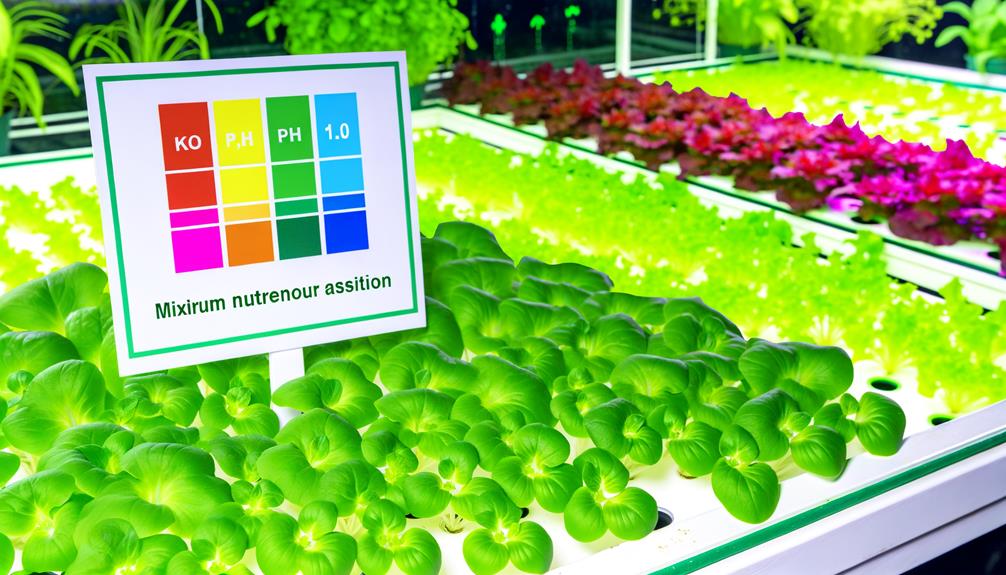
Understanding the importance of pH in hydroponics is vital, as it directly influences nutrient availability and plant health.
The pH level, a measure of acidity or alkalinity, affects the solubility of essential nutrients, ensuring they are in a form that plants can absorb.
Maintaining an ideal pH range, typically between 5.5 and 6.5 for most hydroponic systems, is essential for maximizing nutrient uptake and preventing deficiencies or toxicities.
Deviations from this range can lead to poor growth, reduced yields, and increased susceptibility to diseases.
Monitoring and adjusting pH regularly helps maintain a stable environment, promoting vigorous plant growth.
As a result, precise pH management is a cornerstone of successful hydroponic cultivation, underscoring its significant role in plant nutrition.
How Ph Affects Nutrient Uptake
The pH of a nutrient solution critically influences the availability and uptake of essential nutrients by plants.
An ideal pH range, typically between 5.5 and 6.5, guarantees maximum nutrient solubility and absorption.
Deviations from this range can lead to nutrient lockout, where specific nutrients become chemically unavailable to plants, resulting in deficiencies and impaired growth.
Optimal Ph Range
Maintaining an ideal pH range is vital for maximizing nutrient uptake in plants, as pH levels directly influence the availability of essential nutrients. In hydroponics, the best pH range is generally between 5.5 and 6.5.
Deviations from this range can cause certain nutrients to become less available or even toxic. For instance, iron and manganese are more accessible in slightly acidic conditions, while calcium and magnesium are better absorbed in slightly alkaline environments.
Consistent monitoring and adjustment of pH levels guarantee balanced nutrient absorption, which promotes healthy plant growth and development.
- Best Range: 5.5 to 6.5 for most hydroponic systems.
- Nutrient Availability: Influences absorption of iron, manganese, calcium, magnesium.
Nutrient Lockout Causes
A pH imbalance can lead to nutrient lockout, wherein essential nutrients become unavailable to plants despite being present in the growing medium. This occurs because certain nutrients are only soluble within specific pH ranges. For instance, iron and manganese are more soluble in acidic conditions, while calcium and magnesium prefer slightly alkaline environments. The following table illustrates the impact of pH on nutrient availability:
| pH Range | Nutrient Availability | Affected Nutrients |
|---|---|---|
| < 5.5 | Limited | Calcium, Magnesium |
| 5.5-6.5 | Ideal | Most Nutrients |
| 6.5-7.5 | Decreasing | Iron, Manganese |
| > 7.5 | Severely Limited | Phosphorus, Iron, Manganese |
| > 8.0 | Extremely Limited | Most Nutrients |
Maintaining the appropriate pH guarantees nutrients remain in a bioavailable form, essential for ideal plant growth in hydroponic systems.
Interpreting the Ph Chart
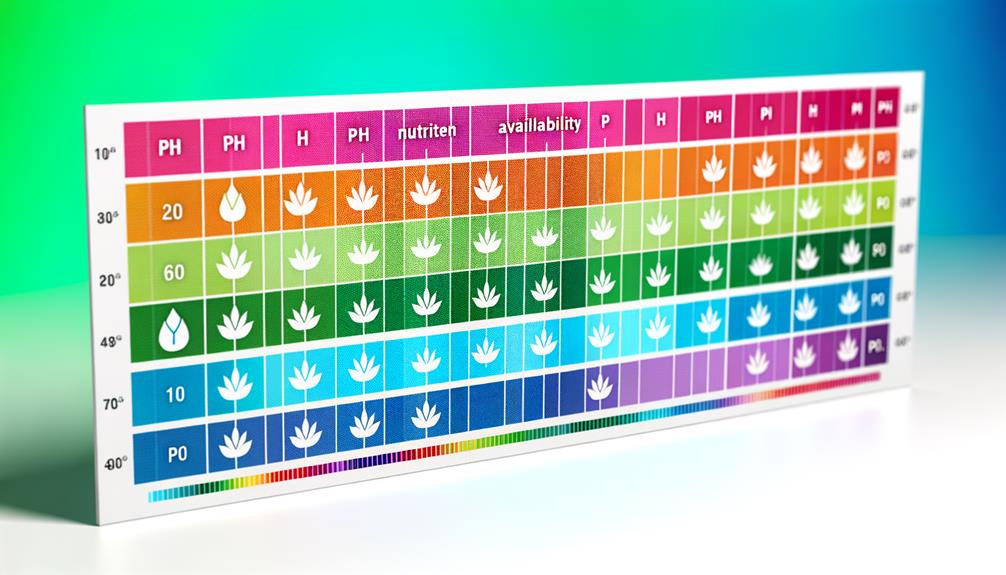
Understanding the pH chart involves recognizing how pH levels influence the availability of various nutrients in the soil. The chart serves as a critical tool for hydroponic farmers, allowing them to enhance nutrient uptake by maintaining the appropriate pH balance. Different nutrients become more or less available at different pH levels, which makes precise control essential for healthy plant growth. By referring to the hydroponic nutrient chart, growers can determine the optimal pH range for maximizing nutrient absorption and preventing deficiencies. Maintaining a stable pH ensures that essential minerals like nitrogen, phosphorus, and potassium remain accessible to plants. This careful regulation ultimately leads to healthier crops and improved yields in hydroponic farming systems.
Key points to take into account when interpreting the pH chart include:
- Nutrient Solubility: How easily nutrients dissolve in solution at varying pH levels.
- Nutrient Interaction: How pH affects the interaction between different nutrients, potentially leading to deficiencies or toxicities.
These factors underscore the importance of monitoring and adjusting pH levels for ideal nutrient absorption.
Ideal Ph Levels for Plants
Ideal pH levels for plants typically range between 5.5 and 6.5, where nutrient availability is maximized, and plant growth is most vigorous. Maintaining this pH range guarantees that essential nutrients are soluble and accessible to plant roots, facilitating optimal uptake and utilization. Deviations from this range can lead to nutrient lockout or toxicity, adversely affecting plant health and yield.
| pH Level | Nutrient Availability | Plant Health Impact |
|---|---|---|
| 5.5 | High | Ideal growth |
| 6.0 | Maximum | Vigorous growth |
| 6.5 | High | Healthy growth |
| 7.0 | Moderate | Potential issues |
It is vital for hydroponic growers to monitor and adjust pH levels regularly to maintain this ideal range, promoting robust plant development and productivity.
Common Ph Imbalances
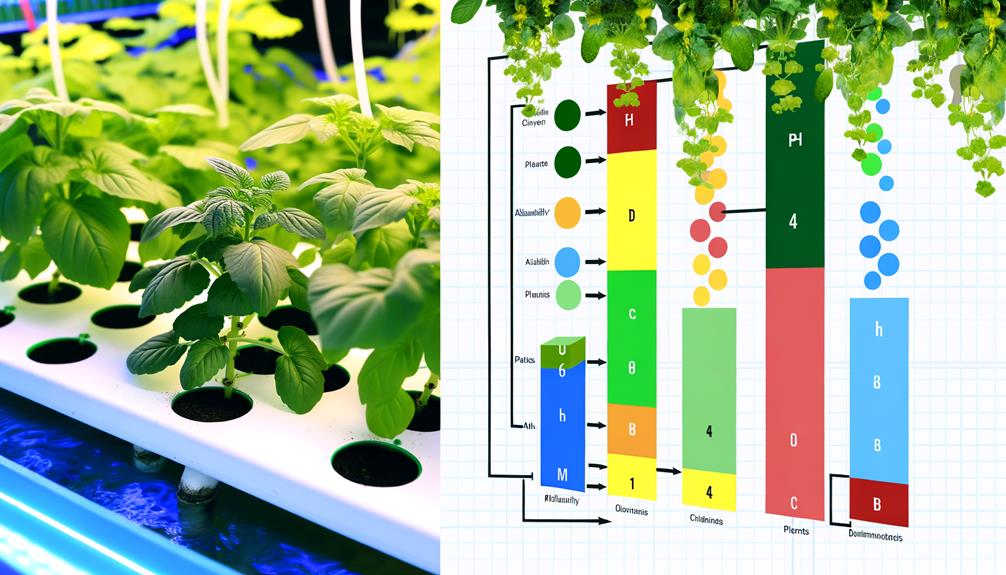
Common pH imbalances can greatly affect nutrient availability and overall plant health.
These imbalances often stem from factors such as soil composition, water quality, and improper fertilization.
Recognizing symptoms in plants, such as chlorosis or stunted growth, and implementing corrective measures like soil amendments or pH-adjusting agents are essential for restoring ideal conditions.
Causes of Ph Imbalance
pH imbalances in soil can be primarily attributed to factors such as excessive use of chemical fertilizers, poor drainage, and the natural composition of the parent material.
These elements often disrupt the delicate pH balance required for ideal nutrient availability.
Chemical fertilizers, particularly nitrogen-based ones, can lead to acidification over time.
Poor drainage can cause waterlogging, which alters soil pH by promoting anaerobic conditions.
Additionally, the inherent properties of the parent material, such as high levels of certain minerals, can predispose soil to either acidic or alkaline conditions.
- Excessive Chemical Fertilizers: Overuse can lead to soil acidification.
- Poor Drainage: Waterlogged conditions alter pH levels.
Symptoms in Plants
When soil pH becomes imbalanced due to factors such as excessive chemical fertilizers, poor drainage, or parent material composition, plants often exhibit a range of symptoms that indicate nutrient deficiencies or toxicities.
Common signs of pH imbalances include chlorosis, or yellowing of leaves, which often suggests iron, manganese, or nitrogen deficiencies.
Purpling of leaves may indicate phosphorus deficiency, while leaf tip burn can signal calcium or potassium imbalances.
Stunted growth and poor root development are also prevalent symptoms, often due to impaired nutrient uptake.
In hydroponic systems, these symptoms may appear more rapidly due to the direct nutrient delivery method, accentuating the importance of maintaining an ideal pH for nutrient availability and plant health.
Rectifying Ph Issues
Addressing soil pH imbalances requires a systematic approach that includes soil testing, the application of appropriate amendments, and continuous monitoring to guarantee ideal nutrient availability for plant health.
Effective rectification begins with accurate pH measurement using reliable test kits or digital meters. Once identified, corrective actions depend on whether the pH is too high or too low.
For alkaline conditions, incorporating sulfur or acidic fertilizers can lower pH. Conversely, lime or wood ash can raise pH in overly acidic environments. Continuous monitoring guarantees that adjustments remain effective and sustainable.
- Use sulfur or acidic fertilizers to lower high pH levels.
- Apply lime or wood ash to elevate low pH levels.
Precision in these steps guarantees plant health and productivity.
Adjusting Ph Levels
To guarantee ideal nutrient availability, precise adjustments to soil or solution pH levels are essential. Confirming that pH levels fall within the preferred range for hydroponic systems (typically 5.5 to 6.5) allows for maximum nutrient uptake by plants. Adjustments can be made using pH up (alkaline) or pH down (acidic) solutions. The table below summarizes common substances used to adjust pH levels effectively:
| Substance | Function |
|---|---|
| Phosphoric Acid | Lowers pH (acidic) |
| Nitric Acid | Lowers pH (acidic) |
| Potassium Hydroxide | Raises pH (alkaline) |
Consistent monitoring and incremental adjustments are crucial to avoid pH fluctuations, thereby safeguarding nutrient availability and promoting peak plant growth. Understanding these factors confirms a stable growing environment.
Tools for Monitoring Ph

Accurate pH monitoring is critical for maintaining ideal nutrient availability in hydroponic systems. Without precise pH control, plants may suffer from nutrient deficiencies or toxicities, leading to subpar growth.
Several tools are essential for efficient pH monitoring:
- pH Meters: Digital devices providing real-time, accurate pH readings. They are highly reliable but require regular calibration and maintenance.
- pH Test Strips: Cost-effective and easy-to-use, these strips offer a quick visual indication of pH levels. However, they lack the precision of digital meters.
Employing these tools guarantees optimal nutrient absorption and plant health.
Conclusion
In hydroponics, pH serves as the keystone, balancing nutrient availability and uptake.
Misalignment in pH can create a cascade of deficiencies or toxicities, akin to a house built on shifting sands.
Mastery of pH interpretation, ideal levels, and corrective measures guarantees prime plant health.
Utilizing precise monitoring tools underpins this meticulous control, rendering pH management indispensable.
Precision in pH fosters an environment where plants can flourish, maximizing growth and yield in hydroponic systems.

